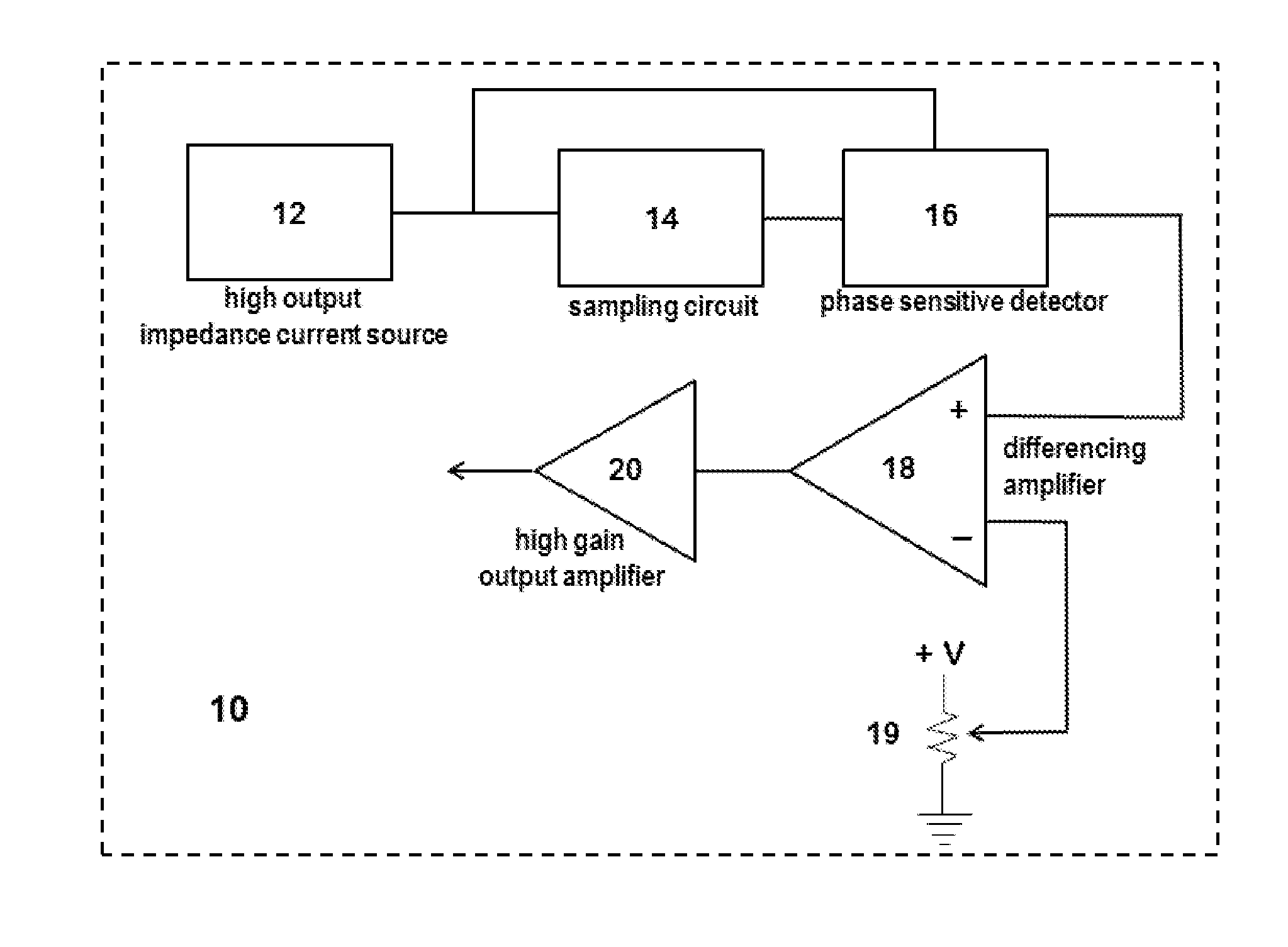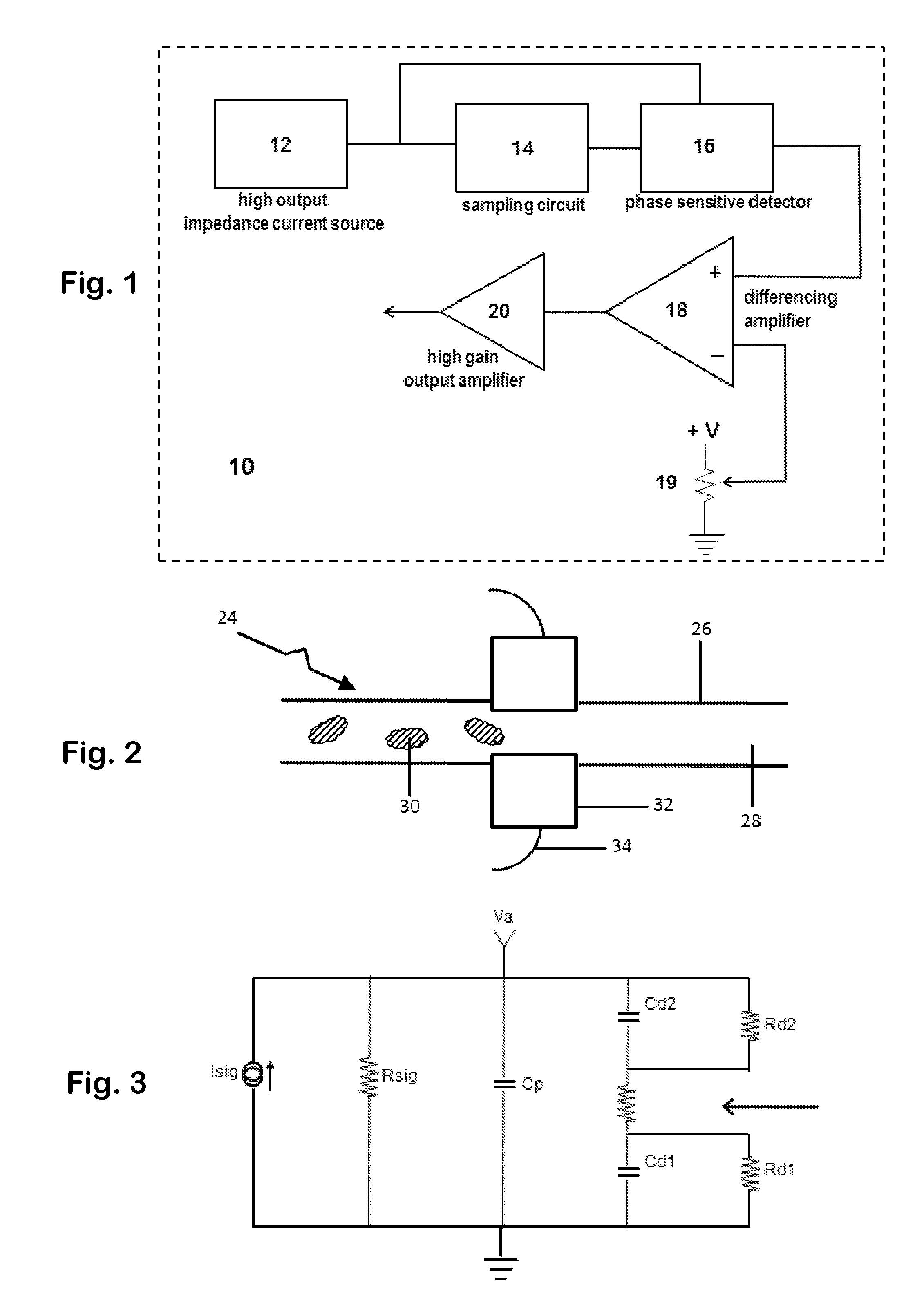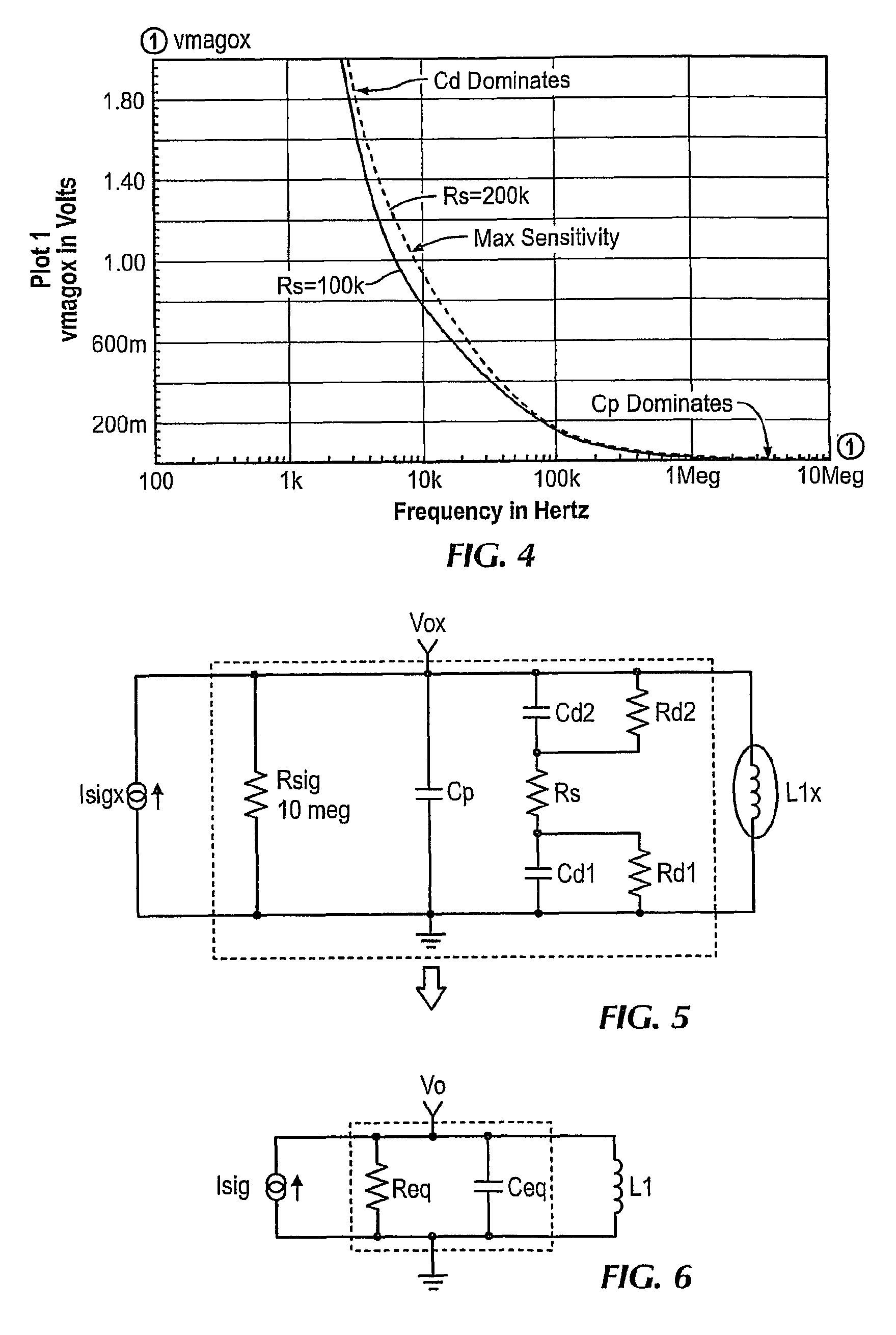Electrical resonance detection of particles and analytes in microfluidic channels
a microfluidic channel and electric resonance technology, applied in the direction of fluid resistance measurement, instruments, material impedance, etc., can solve the problems of inaccuracy in measurement, inability to accurately detect the presence of two distinct capacitances of a typical fluid sample cell, and not without its share of problems, so as to achieve the effect of eliminating the capacitances of the sample cell and enhancing the signal-to-noise ratio of the apparatus
- Summary
- Abstract
- Description
- Claims
- Application Information
AI Technical Summary
Benefits of technology
Problems solved by technology
Method used
Image
Examples
Embodiment Construction
[0029]A conductivity counter apparatus 10 of the present invention is shown in block diagram form in FIG. 1. The first block represents a variable frequency, high output impedance current source 12, which supplies an excitation current to the sampling circuit 14. It is important that the sampling circuit 14 be effectively isolated from impedance effects of other parts of the circuit. For this reason, the excitation circuit should have high output impedance. The current source 12 is designed to provide this characteristic. It is also necessary that the current source 12 be tunable, that is, have a variable frequency that may be swept through a fairly broad range of frequencies. This capability is needed to find the resonance frequency of the equivalent RLC circuit, as described below.
[0030]The sampling circuit 14 is isolated from downstream impedance effects by using an output buffer amplifier having a high input impedance. This buffer is part of the sampling circuit block 14, as ill...
PUM
| Property | Measurement | Unit |
|---|---|---|
| length | aaaaa | aaaaa |
| diameter | aaaaa | aaaaa |
| diameter | aaaaa | aaaaa |
Abstract
Description
Claims
Application Information
 Login to View More
Login to View More - R&D
- Intellectual Property
- Life Sciences
- Materials
- Tech Scout
- Unparalleled Data Quality
- Higher Quality Content
- 60% Fewer Hallucinations
Browse by: Latest US Patents, China's latest patents, Technical Efficacy Thesaurus, Application Domain, Technology Topic, Popular Technical Reports.
© 2025 PatSnap. All rights reserved.Legal|Privacy policy|Modern Slavery Act Transparency Statement|Sitemap|About US| Contact US: help@patsnap.com



